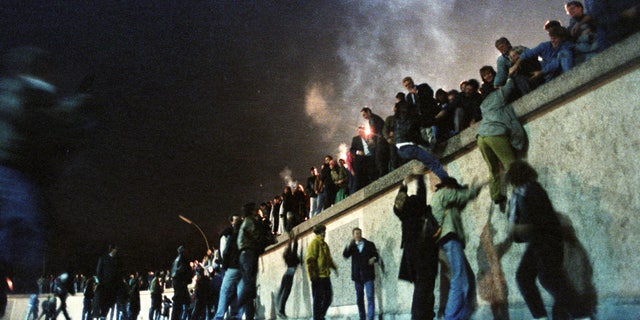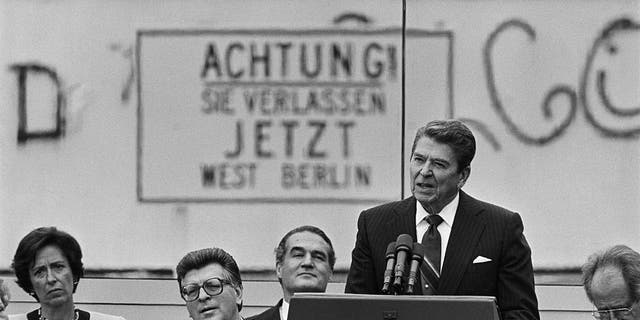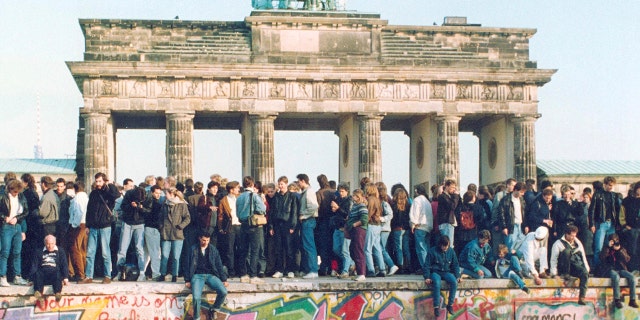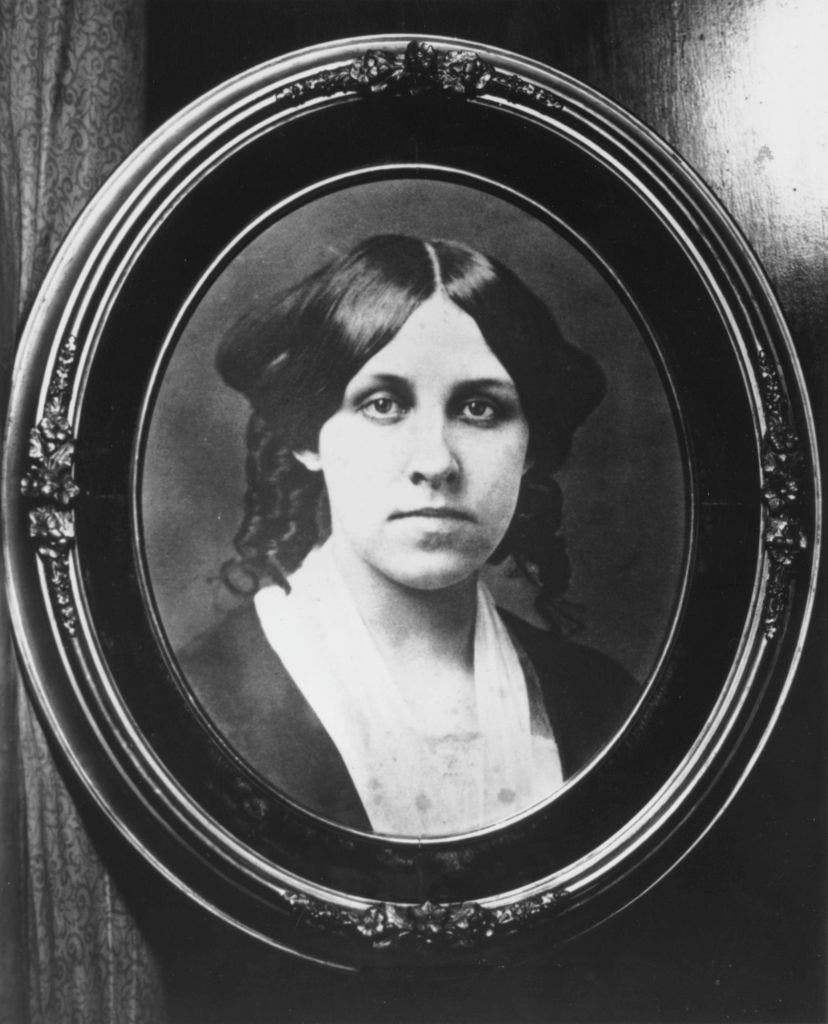The Berlin Wall, a foreboding vestige of the Cold War that divided communist East Berlin from democratic West Berlin, was opened and fell amid confusion, then joyous celebration on this day in history, Nov. 9, 1989.
Jubilant Germans arrived over the next 24 hours with sledgehammers and axes to tear down the symbol of repression — a physical manifestation of the Soviet Union’s fearsome but ultimately fragile “Iron Curtain.”
“The fall of the Berlin Wall … was one of the most consequential events of the 20th century, exposing the Soviet Union as a corrupt, weak ‘empire’ and effectively ending the Cold War,” the Heritage Foundation reported of the event.
ON THIS DAY IN HISTORY, NOV. 8, 1864, PRESIDENT LINCOLN DEFEATS GEN. MCCLELLAN TO WIN RE-ELECTION
“By January 1989, there was scarcely a ruble’s worth of difference between a Third World nation and a member of the Warsaw Pact, the group of Eastern and Central European nations that served at Moscow’s pleasure.”
The Berlin Wall was born out of the entente between the Soviet Union and the western allies, the United States, United Kingdom and France, primarily, that joined forces to defeat Nazi Germany in World War II.

East German citizens climb the Berlin Wall at the Brandenburg Gate after the opening of the border was announced early Nov. 9, 1989.
(REUTERS/Herbert Knowowski)
The Red Army overwhelmed Germany from the east in the spring of 1945; the U.S.-led allies swept over the Rhine River from the west.
After its surrender in May, Germany was divided between a Soviet sector in the east, and American, British and French sectors in the west. They became separate nations — East Germany and West Germany — in 1949.
VETERANS DAY IS NOT ALWAYS EASY FOR OUR HEROES – HERE’S WHAT TO SAY AND DO
Berlin, deep within Soviet-controlled East Germany, was similarly subdivided. West Berlin became a remote island of western democracy far behind what Winston Churchill dubbed the Iron Curtain, more than 100 miles from West Germany.
“The fall of the Berlin Wall was one of the most consequential events of the 20th century.”
The uneasy alliance between the victorious World War II powers begin to disintegrate when the Soviet Union shut off transportation routes between West Berlin and the outside world in 1948.
The U.S. responded with the Berlin Airlift — flying in necessities for two million residents of West Berlin across Soviet-controlled airspace. That effort was soon aided by the U.K.

President Ronald Reagan, making his famous challenge to Mikhail Gorbachev to "tear down" the Berlin Wall, on June 12, 1987.
(Getty Images)
“At one point, Air Force and Navy planes were landing at Tempelhof Airport every 45 seconds,” notes the U.S. Department of Defense in its history of the humanitarian mission.
“On Easter Sunday, April 17, 1949, the constant procession of planes managed to deliver 13,000 tons of cargo, including the equivalent of 600 railroad cars of coal — all in one day!”
West Berlin began to rise from the ruins of World War II and prosper in the 15 years after the war; it soon became a magnet for East Germans fleeing communism.
Soviet-backed East Germany responded by building a 100-mile wall around West Berlin in 1961. The proverbial Iron Curtain had become a real steel-and-concrete curtain symbolizing the repression of Soviet communism.
The division between the prosperity of the west and the economic failures and political repression behind the Iron Curtain soon become apparent to those leaving that Iron Curtain behind.

U.S. Air Force C-54 Skymaster aircraft lands at Berlin Tempelhof Airport during the Berlin Airlift, June 6, 1948. The Berlin Airlift was prompted by the Soviet’s Berlin Blockade, one of the first international crises of the Cold War.
(AP)
International pressure reached a fever point in June 1987 when President Ronald Reagan, speaking in West Berlin, dared Soviet leader MIkhail Gorbachev by name to “tear down this wall!”
Protests rapidly mounted among within the Soviet Bloc of Eastern Europe.
“In 1989, political changes in Eastern Europe and civil unrest in Germany put pressure on the East German government to loosen some of its regulations on travel to West Germany,” the Imperial War Museum of London reports of the final days or the Berlin Wall.
CLICK HERE TO SIGN UP FOR OUR LIFESTYLE NEWSLETTER
“At a press conference on 9 November, East German spokesman Günter Schabowski announced that East Germans would be free to travel into West Germany, starting immediately.”
His televised message, it turns out, was delivered by mistake. But the news, broadcast across western television, spread immediately. Thousands of Germans flooded the Brandenburg Gate, overwhelming guards who had no orders.

In this Friday, Nov. 10, 1989, file photo, hundreds of Berliners climb atop the Berlin Wall at Brandenburg Gate in Berlin, demanding in a peaceful protest that the wall will be pulled down. When the Berlin Wall fell, the Soviet Union stepped back, letting East Germany’s communist government collapse and then quickly accepting German unification.
(AP Photo/File)
The images of joyous Germans reuniting, hugging, laughing and celebrating over the next 24 hours appeared to herald a hopeful new era in world history.
CLICK HERE TO GET THE FOX NEWS APP
Germany reunited less than a year later, in October 1990.
The Soviet Union collapsed the following year, In December 1991.
The United States and its Western Allies had won the Cold War.
 Iktodaypk Latest international news, sport and comment
Iktodaypk Latest international news, sport and comment




